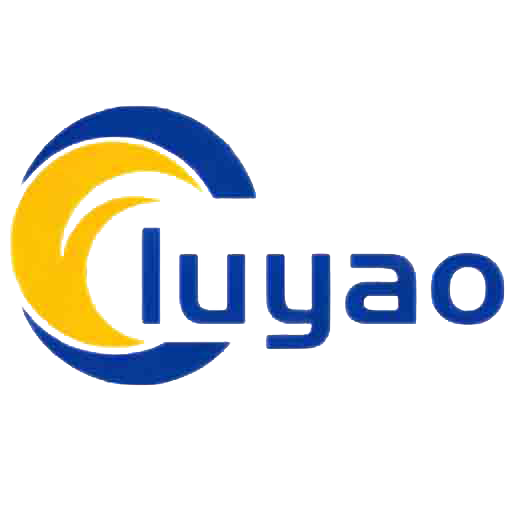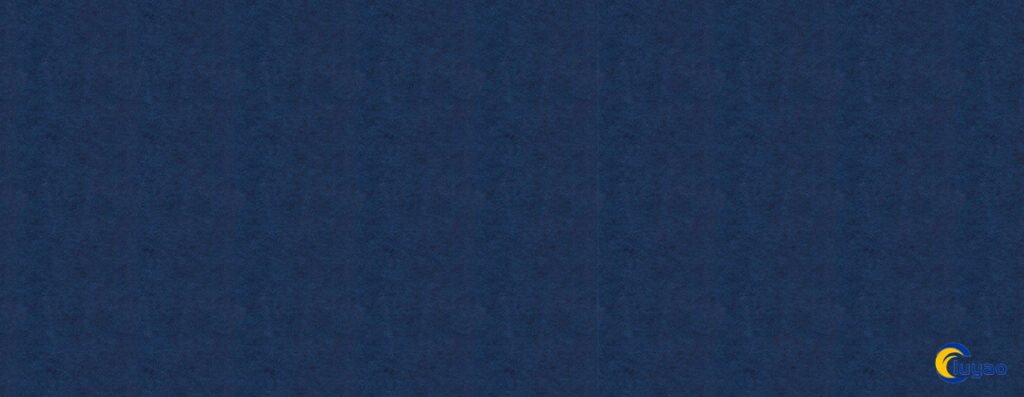
Edge Banding Professional Manufacturer in China
Edge banding types selection
Factory direct sales with top prices, helping you to occupy more share in your market
PVC Edge Banding
A common mistake, many furniture producers make, is using PVC edgebanding with poor quality or wrong color; this jeopardizes the overall quality of the end product. At Luyao, our highly competent and skilled staff critically examines and selects reputable suppliers for our products. As a result, quality is always guaranteed and our quality teams thoroughly examine each finished product.
PVC itself is a very strange material that stands the risk of reacting over time. If not well-examined or made with proper ingredients, it can shrink or expand. This is a risk that our customers don’t need to think about when using our products.(Why would they expect?)
Formica 1mm pvc edge banding 6477
Formica edging tape 9529
Formica white edging tape M4190
Formica oak edging tape 8677
Formica paintable edge banding 9237
Formica edge band 9534
Formica mdf edging tape 463
Formica ply edge banding 9921
Formica pvc edge band tape 625
Formica pvc edge band tape 656
Formica pvc edge plastic banding 3546
Formica pre glued pvc edge banding 9271
Pvc edge banding formica 9536
Formica kitchen cabinet pvc edge banding 1196
Formica pvc edge banding for plywood 9915
ABS Edge Banding
ABS (Acrylonitrile Butadiene Styrene) edge banding is a high-quality material used to cover the exposed edges of furniture, cabinetry, and panels. Known for its durability and aesthetic appeal, ABS edge banding is an excellent choice for both residential and commercial applications.
ABS edge band laminate 23A0217
ABS edge band 23A0210
ABS edgebanding 23A024
Abs banding tape 23A022
White abs edging 23A020
ABS hot melt edge banding 23A019
ABS edge taping 23A018
ABS edge band for furniture 23A015
ABS laminate edge tape 23A014
1mm abs edge banding strip 23A011
ABS edge banding for furniture decoration MATT-6696
0.4mm abs edge banding MATT-3372
Edge supply edge banding MATT-3370
ABS waterproof edge banding MATT-3359
Furniture edge banding tape MATT-2045
Acrylic edge banding
ABS (Acrylonitrile Butadiene Styrene) edge banding is a high-quality material used to cover the exposed edges of furniture, cabinetry, and panels. Known for its durability and aesthetic appeal, ABS edge banding is an excellent choice for both residential and commercial applications.
Acrylic automatic edge banding 23A0217
Acrylic edge banding furniture 23A0210
Acrylic edge banding supplier 23A024
Acrylic edge banding wood 23A022
3d acrylic pmma edge banding 23A020
pmma edge banding 23A019
PMMA acrylic edge banding for furniture kitchen 23A018
PMMA acrylic edge banding 23A015
Colorful pmma edge banding 23A014
Acrylic pmma edge banding tape 23A011
Acrylic 2mm edge banding MATT-6696
Acrylic Laminate plywood edge banding MATT-3372
3d acrylic edge banding tape MATT-3370
3d pmma acrylic edge banding MATT-3359
Acrylic edge tape for wood MATT-2045
Factory Certificate
We will contact you by email immediately after receiving your information. Mail: emily.gu@asiaedgebanding.com

CTC

CNAS
our Customized Service
At shanghai luyao industry co.ltd, we offer a comprehensive edgebanding customization service to meet your specific needs. Our customization options include but are not limited to:
Color Match: We offer a wide range of colors, including custom color production runs for PVC, ABS, and acrylic edgebanding. We can match colors to your samples or specifications.
Texture Options: Choose from a variety of textures, including gloss, matte, wood grain, and more to meet your design requirements.
Widths and Thicknesses: Our edgebanding is available in a variety of widths and thicknesses, and we can customize slit rolls to your exact specifications.
Adhesive Options: We offer pre-glued, peel-and-stick, and glueless options to meet your application needs.
Packaging: Our standard packaging is one roll per box with the LUYAO logo, mark, and country of origin. We also accept custom packaging with minimum order requirements.

Multiple colors LCL delivery
Our top-selling color is white edge banding, with hundreds of shades and styles to choose from. In addition to our extensive white options, we also offer custom colors and various textures, all of which can be shipped together to meet your specific needs.
- White edge banding
- Wood grain edge banding
- High gloss
- Solid color edge banding
- Marble grain edge banding
- Farbic grain
Customized Packaging
Our company ships over 1,000,000 meters of edge banding annually. Our standard packaging is a carton, with one roll per carton, featuring the LUYAO logo, mark, and place of origin. If you’re looking to develop your own brand, we offer customized packaging options.


On-site inspection
Our factory is located in Ningbo, China. Once you are satisfied with the quality of our samples and decide to order our edge banding products, before paying the balance, we can arrange personnel to conduct on-site inspection before delivery. In addition, we also support our staff to provide online test reports and delivery videos to ensure transparency and quality assurance of the whole process.
Whenever you purchase any of Luyao’s edgebandings, expect nothing less than the following qualities;
- Durable against all external damages and hits.
- Aesthetically appealing with its perfect designs and impressive look.
- Diversified with plenty of colors that perfectly match the chipboards.
- Customized; It is possible to choose from smooth, textured, high gloss and wood grain colors.
In our productions, we make jumbo rolls in widths of 610mm. We can slit them to any width that you would prefer. It is up to your preference, contact us and we will strive to have it for you.
FAQ
What is the purpose of edge banding?
Edge banding refers to both a process and the narrow strips of material used in it. In finish woodworking, edge banding is essential to creating a durable and good-looking decorative edge. Our edge banding strips are used on edge banding machines and are not suitable for hand edge banding.
Edge banding Function: Seal and Protect Exposed Edges
Used to seal exposed raw edges of plywood/mdf/chipboard. One side features a heat-sensitive adhesive that easily adheres to the board, while the other side acts as a barrier against dust and moisture. This not only gives the cabinet a perfect appearance, but also prevents the internal board from warping.
Material Options
Edge banding is available in a variety of materials. The most commonly used are PVC, ABS and PMMA (acrylic). Each material has its own advantages and is suitable for different applications.
Choose the Right Thickness
Edge banding is available in different thicknesses to suit a variety of needs:
0.5 mm: This is the thinnest option and is ideal for low-use areas or decorative pieces that require a low-profile look.
1 mm: It provides better protection against wear and tear and is ideal for high-traffic areas such as kitchens and bathrooms.
3mm: As a heavy-duty option, it is used in commercial environments where strength and durability are critical.
In short, edge banding plays a vital role in both the beauty and functionality of plywood furniture and cabinets. Choosing the right material and thickness is key to achieving the best results.
How to do edge banding on plywood?
Edge banding is a critical process in woodworking, especially when dealing with plywood. Not only does it enhance the look of the finished product, it also protects the edges from moisture and wear. Here is a step-by-step guide to edge banding plywood using an edge bander:
Preparation
Before you begin, make sure you have all the necessary materials and tools ready. This includes edgebanding materials (pvc edge banding, abs edge banding, acrylic edge banding), edgebanding machine, hot melt glue, edge banding trimmer, and rags.
Measure and cut edgebanding
Measure the length of the exposed edge of the plywood. Cut the edgebanding material to a length slightly longer than the measured length, adding about an inch on each side to allow for overhang.
Apply edge banding
Place the edgebanding on the edge of the plywood, making sure the overhang is equal on both ends. Preheat the edgebanding machine to the recommended temperature for the type of edgebanding material you are using. Once the machine is ready, feed the plywood and edgebanding into the machine. Add hot melt adhesive to the edge banding machine, and the machine will apply heat and pressure to bond the edge banding to the plywood.
Trim off any excess
After applying the edge banding, check for any defects and manually trim them (in most cases, the machine produces very good quality and is basically flawless)
Finishing touches
Finally, wipe the surface dust with a rag to eliminate any rough spots and ensure a professional result.
Follow these steps to get a clean, durable, and beautiful result on your plywood project using an edge banding machine.
Can I use edge banding on MDF?
Yes, you can definitely use edgebanding on MDF (Medium Density Fiberboard). Edgebanding is a great way to finish the edges of MDF, both aesthetically and practically.
Why use MDF edgebanding?
The main reason to use MDF edgebanding is to seal the end fibers of the board in preparation for painting or finishing. MDF has a smooth surface that is ideal for painting, but the edges are porous and will absorb moisture, causing it to swell or warp. Edgebanding covers these fibers, providing a smooth edge that is ready for painting, and protects the MDF from moisture and wear.
What temperature is needed for edge banding?
When edgebanding, temperature plays a vital role in ensuring that the edgebanding material is properly bonded to the substrate. Temperature requirements may vary depending on the type of adhesive and the specific edgebanding machine being used.
Softening point of edgebanding adhesive
The softening point is an important indicator of the heat resistance of the adhesive. It is usually between 80°C and 120°C. A higher softening point means that the adhesive is less likely to melt at higher temperatures, which is critical to maintaining the integrity of the bond in a variety of environments.
Application temperature
The application temperature refers to the temperature of the adhesive on the edgebanding machine’s adhesive roller. This temperature must reach the recommended level for the specific adhesive being used to ensure optimal bond strength. For example, the EDGETEQ S-300 edgebanding machine has a high-quality adhesive application system with an adhesive roller that provides a constant temperature and viscosity for all workpiece thicknesses.
Open time of edgebanding adhesive
The open time is the time from the adhesive being applied to the edgebanding strip being pressed onto the substrate. This time frame is critical to ensuring proper bonding. The open time is closely related to the feed rate of the edgebanding machine. Machines with faster feed speeds require adhesives with shorter open times, while machines with slower feed speeds can use adhesives with longer open times.



































